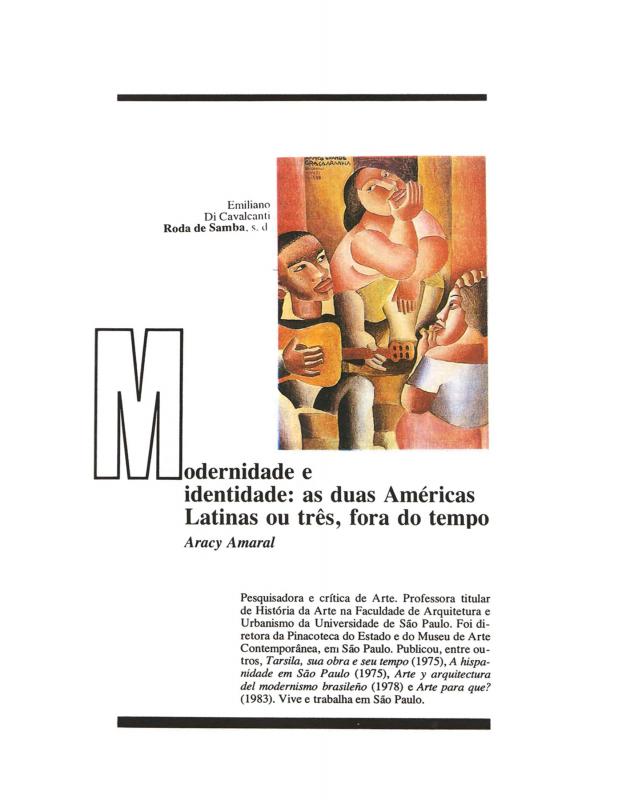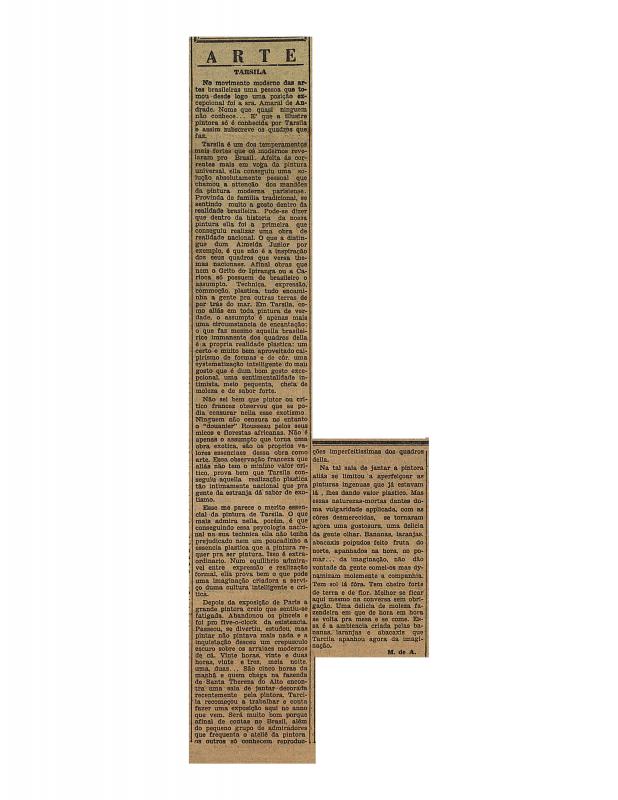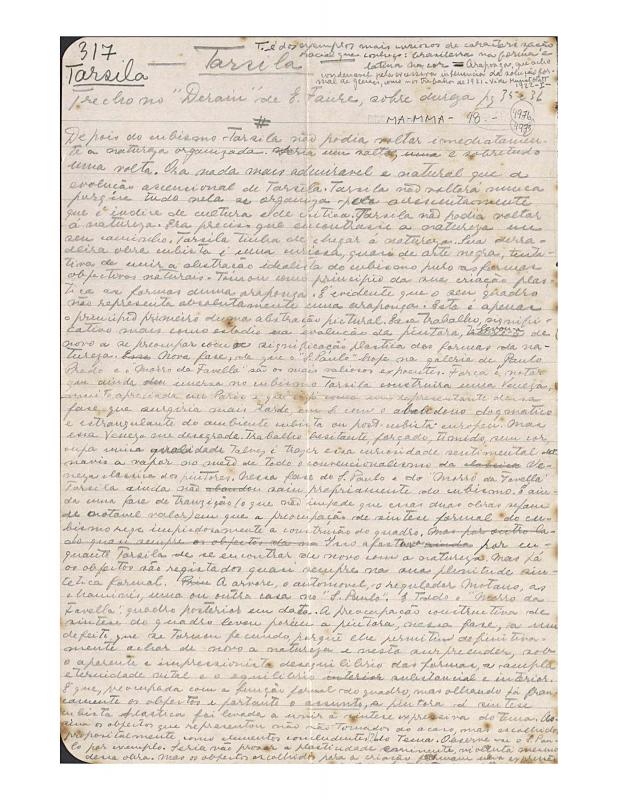Aracy Amaral (b. 1930) is a historian and art critic who has taken a keen interest in Latin American art since 1975. She attended the Austin Symposium in Texas, where she established relationships with Latin American critics including Marta Traba, Juan Acha, and Damián C. Bayón, who piqued her interest in the “identity” aspect of art that was very much in vogue during the 1970s. In her opinion, in the article “Modernidade e identidade: as duas Américas Latinas, ou três, fora do tempo” [see doc. no. 776159], what is “new” is duty-bound to express self-affirmation, and is intimately associated with the idea of what is “Brazilian,” and what is “traditional,” and with the concept of “internationalism.”
Aracy Amaral has undoubtedly written more about the work of Tarsila do Amaral (1886–1973) than anyone, including her book Tarsila: sua obra e seu tempo (São Paulo: Editora Perspectiva, 1975). In another book—Artes Plásticas na Semana de 22 (São Paulo, Editora Perspectiva, 1970)—she discusses the key event of Tarsila’s generation, the Semana de Arte Moderna in 1922, which Tarsila did not attend because she was in Paris at the time, but she was in agreement with the Semana themes. The “modernists” who were involved in the event were not particularly interested in Surrealism, which is why this researcher strains to detect the traces she finds in several aspects of the artist’s work that lead her to her conclusion. To give legitimacy to her reading, Aracy refers to interviews that were published in RASM magazine (Revista Anual do Salão de Maio) in 1939, in which Tarsila states that she did not notice the subconscious nature of some of the images in her paintings until long after she had finished them.
There are two early articles by Mário de Andrade that shed light on Tarsila do Amaral’s work. The first of these, “Tarsila” [doc. no. 781921], addresses the subject of invention, because de Andrade sees in her “a creative imagination at the service of an intelligent, critical culture.” The other article, which has the same title, was published by the IEB-USP (1999) and is about their correspondence; it shows that one of the most remarkable aspects of the cultural anthropophagy ideas of the São Paulo group, to which Tarsila belonged, involved the expression of a desire for a sense of nationality, albeit of a more flexible nature [doc. no. 781938].



